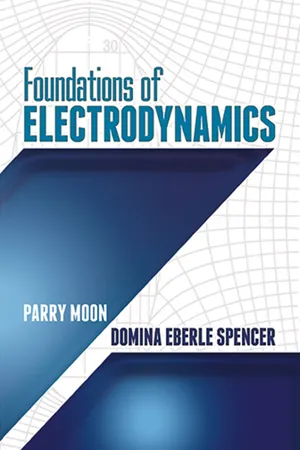
- 320 pages
- English
- ePUB (mobile friendly)
- Available on iOS & Android
Foundations of Electrodynamics
About This Book
Defined by the authors as "a serious attempt to develop electrodynamics on a postulational basis and to define each concept in the most general way, " this advanced undergraduate text takes a logical rather than historical approach. The treatment presupposes some knowledge of electricity and magnetism, making substantial use of vector analysis.
The first ten chapters employ a nonrelativistic perspective, covering fields, basic concepts, Maxwell's equations, charges with no relative motion and charges in uniform motion, accelerated charges, skin effect, waves, wave guides, and antennas. The final two chapters explore moving systems and relativistic electrodynamics. Numerous figures illuminate the text, and appendixes offer useful information on notation, differential equations, and other topics.
Frequently asked questions
Information



Table of contents
- Cover
- Title Page
- Copyright Page
- Contents
- Preface
- 1 Fields
- 2 Basic Concepts
- 3 Maxwell’s Equations
- 4 Charges With No Relative Motion
- 5 Charges In Uniform Motion
- 6 Accelerated Charges
- 7 Skin Effect
- 8 Waves
- 9 Waveguides
- 10 Antennas
- 11 Moving Systems
- 12 Relativistic Electrodynamics
- Appendix
- Index